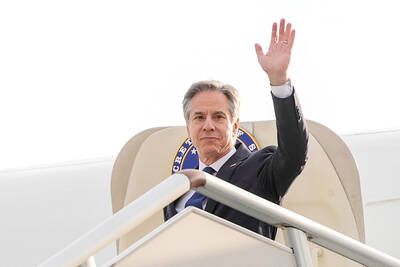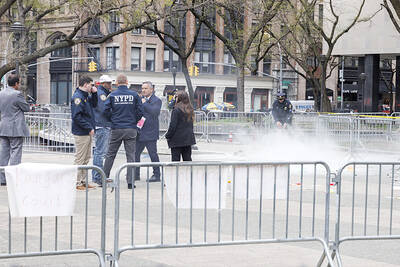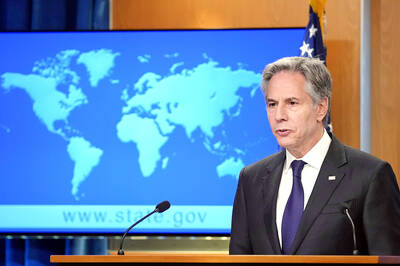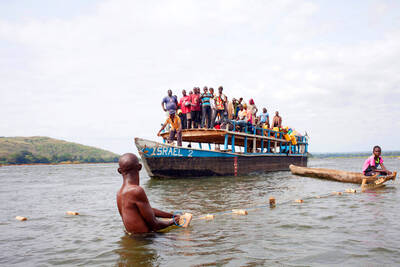The historic Paris climate pact dashed across the ratification finish line on Wednesday to diplomatic cheers.
“A turning point for the planet,” US President Barack Obama said.
“A defining moment for the global economy,” said Paul Polman, chief executive of Unilever and chairman of the World Business Council for Sustainable Development.
However, the cold, hard reality of what is needed to fulfill the agreement’s pledges will soon bite, experts warned.
Its accelerated entry into force was driven by many things, including the prospect of US Republican presidential candidate Donald Trump — who has described global warming as a hoax perpetrated by the Chinese — winning the White House.
The rapid, joint ratification by China and the US also set an example hard to ignore, but the main impetus for locking in the deal was clearly the growing sense of urgency about the looming threat of climate change.
“Time is absolutely of the essence,” Greenpeace International executive director Jennifer Morgan said. “The question is not ‘whether,’ it is ‘how fast.’”
Almost daily, global warming red flags are popping up.
Every month so far this year has set a temperature record and this year is on track to supplant last year as the hottest ever registered.
Scientists have forecast that average global temperatures — already 1?C above the preindustrial benchmark — could sail past 1.5?C within a decade and 2?C by mid-century.
A maelstrom of superstorms fueled by rising seas, deadly floods and drought prompted the world’s nations to lower the threshold for dangerous warming in the Paris pact to “well below” 2?C.
Reaching that target will require a breakneck, wholesale shift across the globe away from fossil fuels.
Even that will not be enough: We will have to learn how to suck carbon out of the air, scientists say.
The Paris accord’s early validation comes just in time to take center stage at high-level UN talks in Marrakesh next month tasked with translating its planet-saving vision into policy.
It could also accelerate the process.
“This shifts the focus to implementation and strengthening the commitments under the agreement,” said Alden Meyer, a veteran climate analyst at the Washington-based Union for Concerned Scientists.
Nations have informally set a 2018 target for hammering out more than 100 concrete rules and procedures embedded in the climate pact — some of them highly contentious. Originally, the agreement left open a four-year window for that process.
“Many details need to be ironed out before implementation can begin,” said Harjeet Singh, head of climate change for ActionAid.
They include rules for reporting and verification of emissions cuts, how to disburse hundreds of billions of dollars to climate-vulnerable developing nations and the establishment of new market mechanisms.
Even more important, 2018 is shaping up to be a crucial “political moment” when nations will feel pressure to revise and deepen pledges to slash carbon emissions.
At their current level, these so-called “nationally determined contributions” — which do not begin until 2020 — fall woefully short of the target and would result in an unlivable 3?C warmer planet by the end of the century.
Bolstered by a special report from the UN’s climate science panel, to be completed by mid-2018, the world’s major greenhouse-gas emitters will also be expected to deliver detailed national plans, or “pathways,” for economic transformation through 2050.
“If you are going to achieve the objectives in Paris, you need a north star that gives you the direction of travel,” said Meyer, adding that the US, Germany and Canada have taken the lead.
That north star will likewise be visible to corporations and business leaders.
The new treaty “sends an unmistakable signal to business and investors that the global transition to a low-carbon economy is urgent, inevitable and accelerating faster than we ever believed possible,” Polman said.

‘IN A DIFFERENT PLACE’: The envoy first visited Shanghai, where he attended a Chinese basketball playoff match, and is to meet top officials in Beijing tomorrow US Secretary of State Antony Blinken yesterday arrived in China on his second visit in a year as the US ramps up pressure on its rival over its support for Russia while also seeking to manage tensions with Beijing. The US diplomat tomorrow is to meet China’s top brass in Beijing, where he is also expected to plead for restraint as Taiwan inaugurates president-elect William Lai (賴清德), and to raise US concerns on Chinese trade practices. However, Blinken is also seeking to stabilize ties, with tensions between the world’s two largest economies easing since his previous visit in June last year. At the

UNSETTLING IMAGES: The scene took place in front of TV crews covering the Trump trial, with a CNN anchor calling it an ‘emotional and unbelievably disturbing moment’ A man who doused himself in an accelerant and set himself on fire outside the courthouse where former US president Donald Trump is on trial has died, police said yesterday. The New York City Police Department (NYPD) said the man was declared dead by staff at an area hospital. The man was in Collect Pond Park at about 1:30pm on Friday when he took out pamphlets espousing conspiracy theories, tossed them around, then doused himself in an accelerant and set himself on fire, officials and witnesses said. A large number of police officers were nearby when it happened. Some officers and bystanders rushed

Beijing is continuing to commit genocide and crimes against humanity against Uyghurs and other Muslim minorities in its western Xinjiang province, U.S. Secretary of State Antony Blinken said in a report published on Monday, ahead of his planned visit to China this week. The State Department’s annual human rights report, which documents abuses recorded all over the world during the previous calendar year, repeated language from previous years on the treatment of Muslims in Xinjiang, but the publication raises the issue ahead of delicate talks, including on the war in Ukraine and global trade, between the top U.S. diplomat and Chinese

RIVER TRAGEDY: Local fishers and residents helped rescue people after the vessel capsized, while motorbike taxis evacuated some of the injured At least 58 people going to a funeral died after their overloaded river boat capsized in the Central African Republic’s (CAR) capital, Bangui, the head of civil protection said on Saturday. “We were able to extract 58 lifeless bodies,” Thomas Djimasse told Radio Guira. “We don’t know the total number of people who are underwater. According to witnesses and videos on social media, the wooden boat was carrying more than 300 people — some standing and others perched on wooden structures — when it sank on the Mpoko River on Friday. The vessel was heading to the funeral of a village chief in